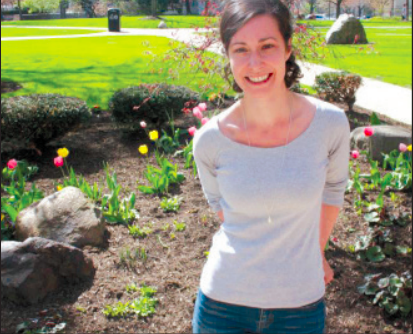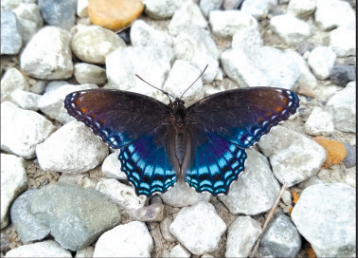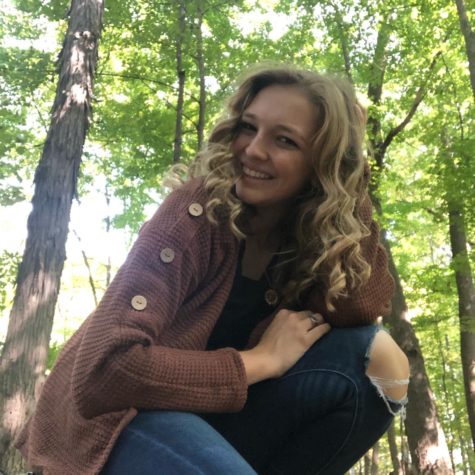Ohio Citizen Science Lecture Series
Butterflies and their environmental impact

Dr. Sarah Diamond spends time in the field researching butterflies.
January 31, 2019
They flutter past when it is warm outside and show their distinct patterns and vibrant colors. They are small creatures, but they have more of an impact than what first meets the eye.
“People have been fascinated by butterflies for centuries…back to Darwin,” Dr. Sarah Diamond, assistant professor of biology at Case Western Reserve University, said. “Butterflies are charismatic.”
Diamond came to Ashland University on Jan. 24 and gave a lecture titled “How humans redistribute butterflies in space and time: surprises and novel insights from long-term citizen science monitoring.”
“Monitoring the butterflies gives insight into methods that are used by citizens to collect data that can be shared in order to be turned into statistics modeling,” Diamond said. Statistics data can predict what changes can occur based on [the butterflies] activity, and how patterns can predict the responses of the Ohio butterfly community.
The Ashland University Environmental Lecture Series is in its 27th year and is focusing on the topic of Ohio citizen science.
“Citizen science is something that volunteers do in collaboration with professional scientists and there are many projects out there,” Dr. Patricia Saunders, director of the environmental science program at Ashland University, said.
Citizen science allows people who are not professionals to learn more about the world around them and get involved in science as well as get in touch with the environment.
“The topic of Ohio citizen science is one that follows on our interest in what’s going on in Ohio which we’ve been focused on in the last two or three years,” Saunders said.
The other installments of the lecture series include a talk on bee conservation research that occurred in Oct. 2018, as well as another talk on March 21 about Ohio citizens and dragonflies.
The butterfly lecture stems from a key point that climate change has a large impact on the populations of butterflies present in Ohio and the world.
“Humans redistribute butterflies in relation to climate change and it effects their populations,” Molly Madill, a sophomore forensic biology and toxicology major, said. “I didn’t realize climate change had such big effects on butterflies.”
In her lecture, Diamond shared that butterflies migrate to the poles or the equator as a result of climate change and this can affect their populations.
“She talked about how it is happening not just to butterflies, but to other plants and insects as well,” Madill said. “It would take millions of years to get these insect populations back.”

“[Butterflies] are critical for a lot of different ecosystem services,” Diamond said. “They are important food resources for other organisms, they are important for pollination, and “people have shown an increase in well-being when butterflies are around,” she said.
The lecture series on butterflies and citizen science shows students and community members alike that they can have a role in environmental science.
“The lecture series was founded as a way of connecting students and the community to environmental science working on real problems out there in the world” Saunders said.
The series has done just that, brought together majors and nonmajors in the field as well as community members to get a better understanding of Ohio citizen science.
“I actually really like this one [lecture], environmental science isn’t really my thing but the butterfly one was cool,” Madill said.
The third and final lecture of the series will be on the subject of dragonflies and damselflies and is presented by Ms. MaLisa Spring with the Ohio Biodiversity Conservation Partnership from The Ohio State University. It is open to students of Ashland University and to the public. This lecture will take place March 21 at 7:30 in the Ronk lecture hall of the Dwight Schar College of Education.
“I think both students and community members really just like learning more about what’s going on in their own backyard,” Saunders said.


